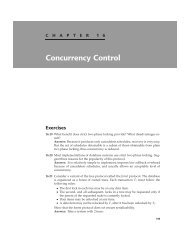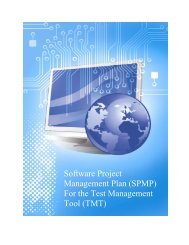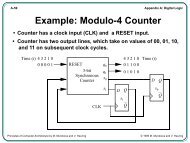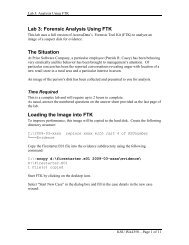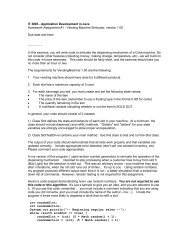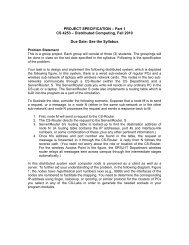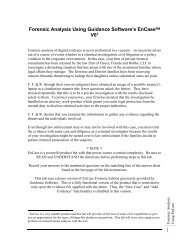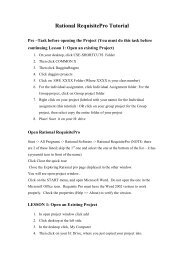You also want an ePaper? Increase the reach of your titles
YUMPU automatically turns print PDFs into web optimized ePapers that Google loves.
18.1 File Menu<br />
Clear - closes the currently open file and clears the text.<br />
Open - brings up an open file dialog.<br />
DRAFT, February 18, 2003, Page 92<br />
Save - saves the current file. By default it is save with the same line terminator format (binary, DOS, or<br />
Mac.) as it had when loaded. If the format could not be determined when loaded (because there was<br />
more than one type of line terminator), it will be saved in binary mode.<br />
Save As - allows the user to save the current file under a new name, and with a choice of line terminators<br />
(binary, DOS format, Mac. format).<br />
Add to Project - if the file is not in the current project, add it to the current project with either a relative or<br />
absolute path. Relative paths are relative to the project file location, and are platform independent. They<br />
can not be used for the default project (you must name the project using, for example, "Project" / "Save<br />
As").<br />
Generate UML (Java only) - pops up the UML diagram and updates the information for the current file.<br />
See UML window for information on jGRASP UML.<br />
Generate Documentation - if the current compiler environment has a "document" command, runs that<br />
command and displays the documentation produced. Currently only the Java compiler environments have<br />
"document" commands.<br />
Print<br />
Native Print - allows the user to print using the native system. This is typically much faster than<br />
JVM printing. For UNIX/Linux, the native print is just a PostScript print using the command set in<br />
the global print settings. The font setting is ignored in this case, and Courier font is used.<br />
Print to File (PostScript) - prints to a PostScript file. The font setting is ignored and a Courier font<br />
is used.<br />
Print to File (RTF) - prints to a Rich Text file. For now, no formatting is done. The only print<br />
settings that are used are font, font size, and color.<br />
JVM Print - print using Java. This tends to be very slow, and produces very large print files.<br />
Print Settings - opens a print settings dialog for this file, or global or project level print settings, and<br />
selects the “CSD” tab.<br />
Escape Virtual Desktop / Enter Virtual Desktop - moves this window to/from a desktop frame to a freefloating<br />
frame.<br />
Exit This Window - closes the CSD window.<br />
18.2 Edit Menu<br />
Undo - this will undo the last edit. Folding is considered an edit in this context even though it does not<br />
modify the text, because folds must be undone to properly undo a sequence of edits. There is a limit to<br />
the total size of edits stored, but the last edit will always be stored no matter how large it is, and for<br />
multiple edits like a replace all, they will all be stored.<br />
Cut - copies selected text to the clipboard, then deletes it.<br />
Copy - copies selected text to the clipboard.<br />
Paste - paste text from the clipboard.<br />
Block Cut/Paste - turn block selection mode on or off. In block mode cut, copy, paste, find, etc. work on<br />
rectangular blocks of text. If the end of a line is selected, the block will extend infinitely to the right (the



